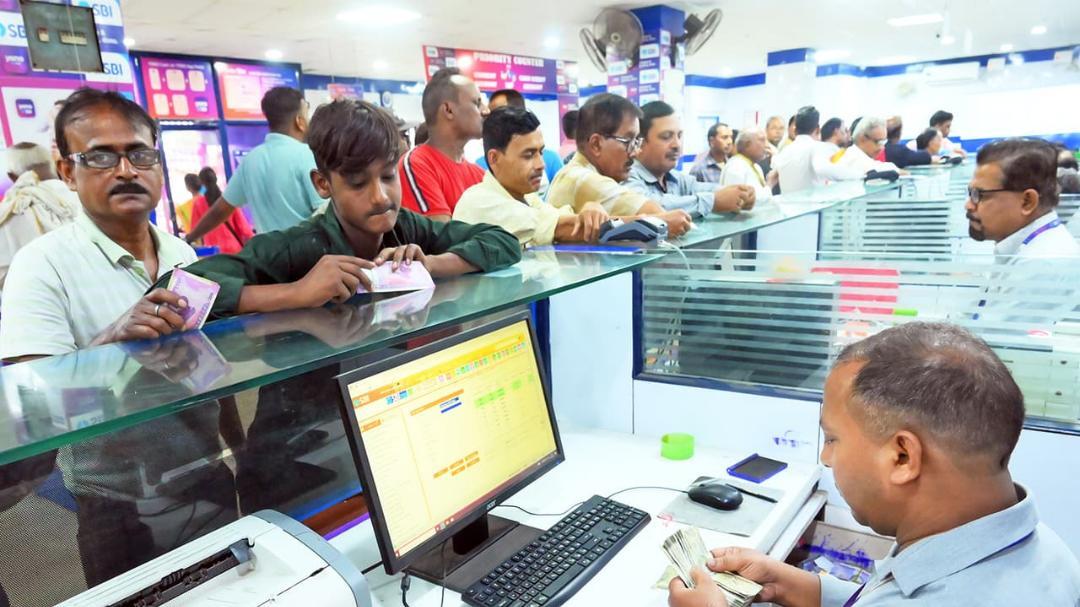
RBI’s Government Securities Holdings Jump to 14.2%: SBI Report
The Reserve Bank of India’s (RBI) share in government securities has witnessed a significant surge, rising to 14.2% in June 2025 from 11.9% last year, according to a recent report by the State Bank of India (SBI). This substantial increase in the RBI’s holdings of government securities has been accompanied by a reduction in exposure by banks, while insurance companies have maintained a stable level of holdings. As the central and state governments prepare for heavy borrowings in the coming months, bond yields are expected to remain rangebound. Furthermore, the RBI’s interventions in the foreign exchange market have resulted in tightened liquidity, prompting the central bank to undertake fresh Open Market Operations (OMO) to inject liquidity into the system.
The SBI report highlights the shifting dynamics in the government securities market, with the RBI emerging as a major player. The increase in the RBI’s holdings of government securities is a significant development, as it reflects the central bank’s efforts to manage liquidity and regulate the bond market. The reduction in exposure by banks, on the other hand, may be attributed to their growing risk aversion and increasing focus on maintaining healthy balance sheets. Insurance companies, which have traditionally been major investors in government securities, have maintained a stable level of holdings, indicating their continued faith in the asset class.
The surge in the RBI’s government securities holdings has significant implications for the bond market. With the central and state governments planning to borrow heavily in the coming months, the demand for government securities is expected to increase. However, the RBI’s increased holdings may limit the availability of securities for other market participants, potentially leading to higher bond yields. Moreover, the RBI’s interventions in the foreign exchange market have resulted in tightened liquidity, which may further exacerbate the upward pressure on bond yields.
To mitigate the impact of tightened liquidity, the RBI has undertaken fresh OMO moves to inject liquidity into the system. The central bank has been actively using OMOs to manage liquidity and regulate the bond market. By purchasing government securities from banks and other market participants, the RBI aims to inject liquidity into the system and prevent a sharp increase in bond yields. The OMO moves are also expected to help maintain stability in the financial markets and support the government’s borrowing program.
The SBI report also highlights the importance of monitoring the RBI’s government securities holdings and their impact on the bond market. The report notes that the RBI’s holdings of government securities have been increasing steadily over the past few years, reflecting the central bank’s growing role in managing the bond market. As the RBI continues to play a crucial role in regulating the bond market, it is essential to closely monitor its holdings of government securities and their impact on the market.
In addition to the RBI’s government securities holdings, the report also highlights the importance of other market participants, such as banks and insurance companies. The report notes that banks have reduced their exposure to government securities, while insurance companies have maintained a stable level of holdings. The reduction in bank exposure may be attributed to their growing risk aversion and increasing focus on maintaining healthy balance sheets. On the other hand, insurance companies continue to view government securities as a stable and attractive investment option, given their low credit risk and predictable returns.
The implications of the RBI’s government securities holdings for the bond market are significant. With the central and state governments planning to borrow heavily in the coming months, the demand for government securities is expected to increase. However, the RBI’s increased holdings may limit the availability of securities for other market participants, potentially leading to higher bond yields. Moreover, the RBI’s interventions in the foreign exchange market have resulted in tightened liquidity, which may further exacerbate the upward pressure on bond yields.
In conclusion, the SBI report highlights the significant increase in the RBI’s government securities holdings, which has risen to 14.2% in June 2025 from 11.9% last year. The report notes that banks have reduced their exposure, while insurance companies have maintained a stable level of holdings. With heavy central and state borrowings ahead, bond yields may stay rangebound. The RBI’s forex interventions have also tightened liquidity, prompting fresh OMO moves to inject liquidity into the system. As the RBI continues to play a crucial role in regulating the bond market, it is essential to closely monitor its holdings of government securities and their impact on the market.





